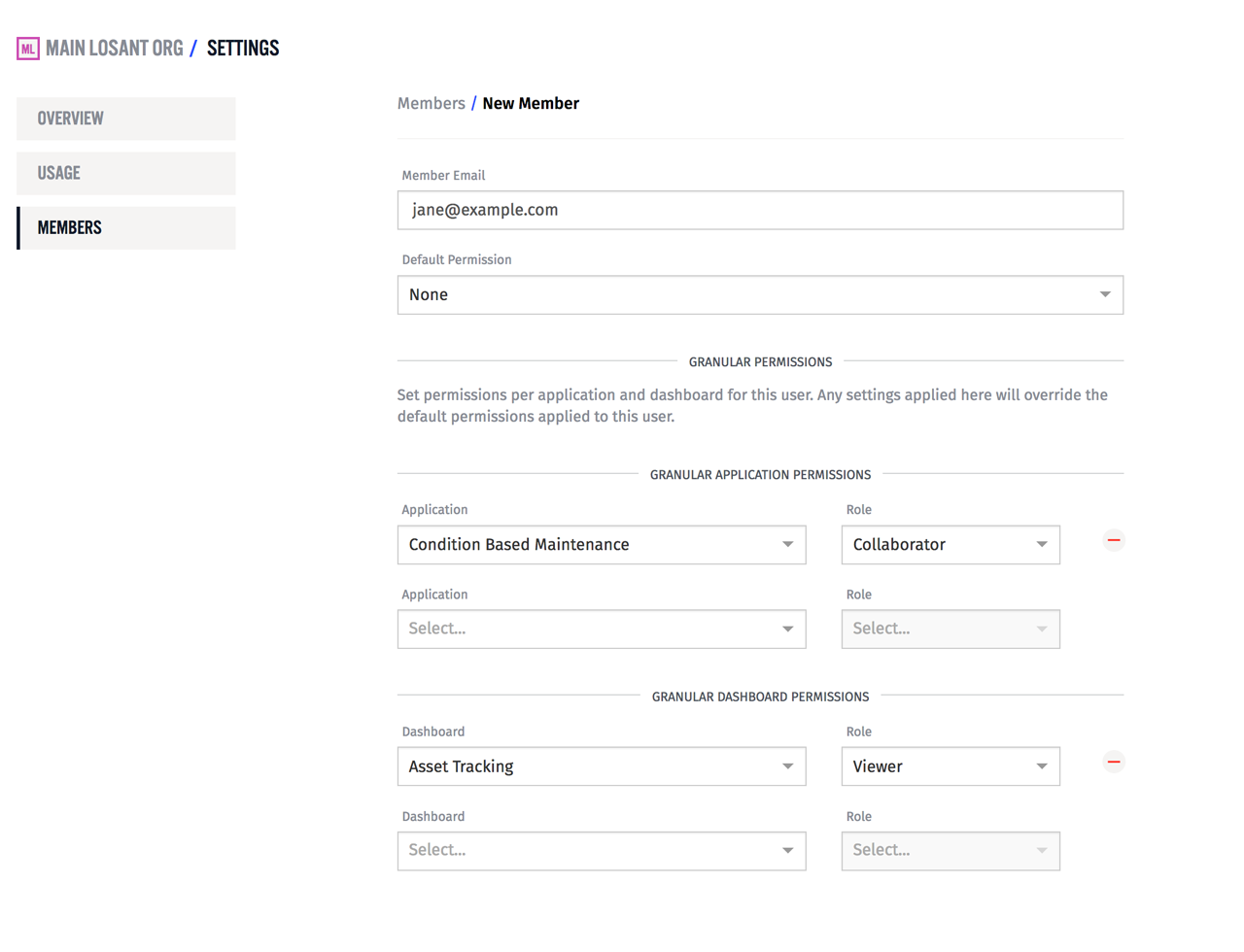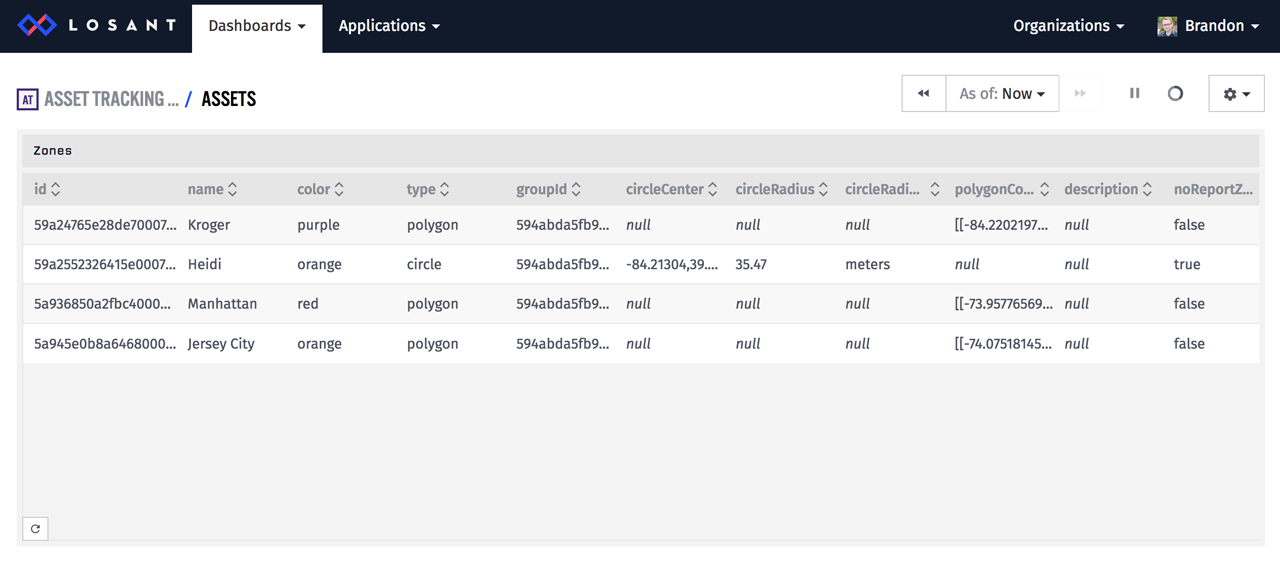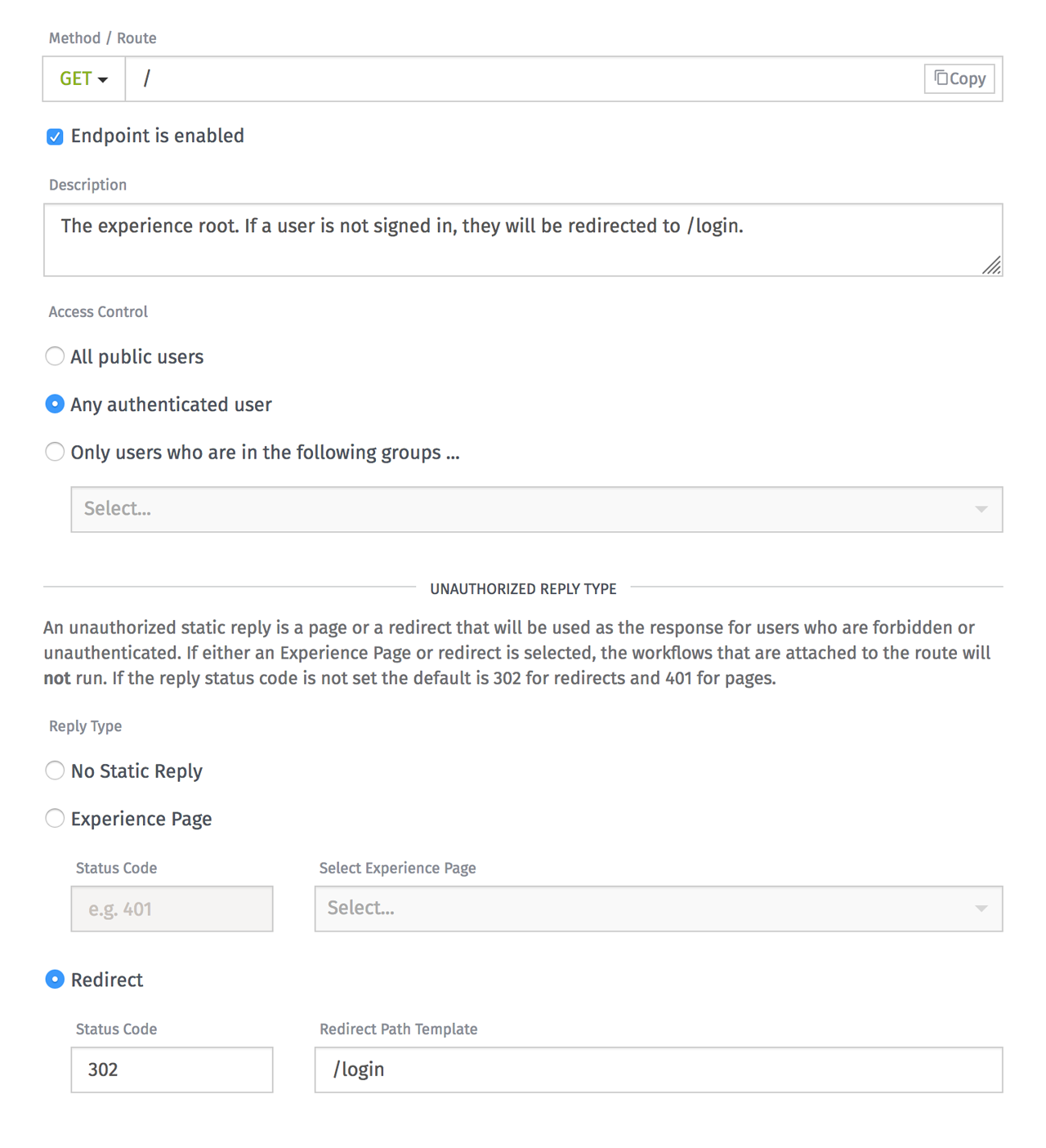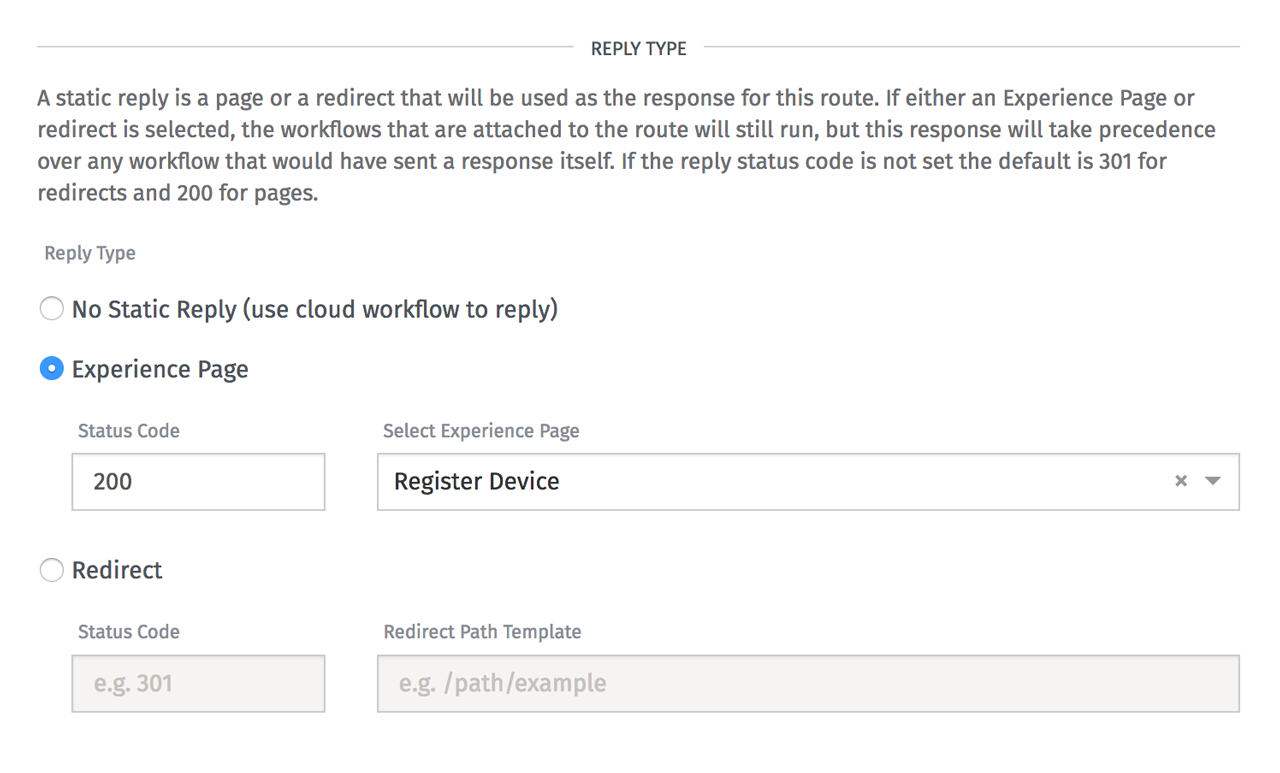Today's update provides additional capability across a variety of Losant's components. Organization administrators can now grant access on a per-application and per-dashboard basis. The new Data Table Block makes it easy to display Data Table information on your dashboards. Experience Endpoints can now directly render pages or return redirects without requiring a workflow.
Granular Organization Permissions
Before today's update, the access level you granted to your organization members (Viewer and Editor) was also applied to all applications and dashboards within that organization. Today's update gives you an extra layer of control where you can specifically grant access on a per-application and per-dashboard basis.

The screenshot above is showing the updated page for inviting members to your organization. The default permission at the top provides a way to apply a global setting to all applications and dashboards that can then be overridden in the lower sections. In this example, I set the default permission to "None", which means, by default, this user cannot view, edit, or access any application or dashboard in this organization. I then added the user as a collaborator to a single application and a viewer to a single dashboard. This allows me to have many applications and dashboards within this organization and only grant access to specific users.
This functionality is ideal for systems integrators, solution builders, and development agencies that are building applications for their clients. You can have a single organization for your company and then invite your clients to the specific applications and dashboards that are relevant to them.
Data Table Dashboard Block
Data Tables provide an excellent way to store non-device related information. They've been used extensively to store all kinds of information that's important to your applications. One of the common pieces of feedback we've received was to add the ability to display Data Table information on your dashboards. This updates adds the new Data Table Block to do just that.

The Data Table above is storing important zones for an asset tracking application. These zones are used in workflows to monitor assets using the Geofence Node. The Data Table Block now makes it easy for me to show a list of all zones on my dashboard. The block's configuration allows you to filter the results using a Data Table query.
Static and Redirect Experience Endpoints
Before this update, all Experience Endpoints needed to trigger a workflow to take any action or return anything to the user. This added a layer of complexity when doing simple tasks, like redirecting unauthenticated users to a log in page or returning a static Experience Page.
This update provides two additional reply type options when configuring an Experience Endpoint to solve these use cases.

The screenshot above is showing an example of an unauthenticated redirect. In most experiences, you want users that hit one of your pages to be redirected to the log in page if they're not logged in. Before this update, you were required to configure the access control for every endpoint as public, and then implement the redirect yourself in the workflow. This defeated the purpose of the access control functionality and added unneeded complexity to your workflows. With this update, Losant will now automatically handle these redirects for you.
You can also now directly configure an Experience Endpoint to render one of your Experience Pages without using a workflow in the middle.

This was added because we saw many workflows that were made up of basically two nodes: an Endpoint Trigger followed by an Endpoint Reply. If all you wanted to do was render static information to your users, you still had to build a workflow to perform this simple task. This update allows you to directly return an Experience Page to your users.
Other Updates
- Added the ability to include the most recent device state when using the Device: Get Node.
- Added a new
QUEUE_OFFLINE_MESSAGESconfiguration option to the Edge Agent to control whether or not state data is buffered when not connected to Losant. - Added a new
scaleLineartemplate helper to make it easier to map a value from one range to another range. - Added the ability to use custom GPS marker images of arbitrary dimensions on the GPS History and Position Chart dashboard blocks.
- Added a new API Endpoint for manually controlling a device's connection status.
What's Next?
With every new release, we really listen to your feedback. By combining your suggestions with our roadmap, we can continue to make the platform easy for you. Let us know what you think in the Losant Forums.
